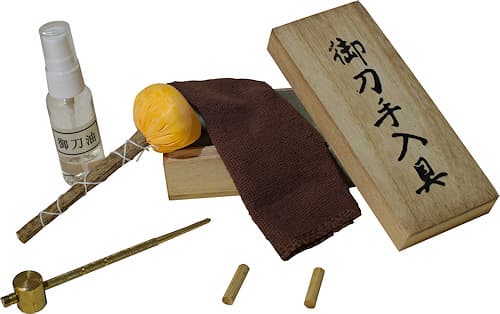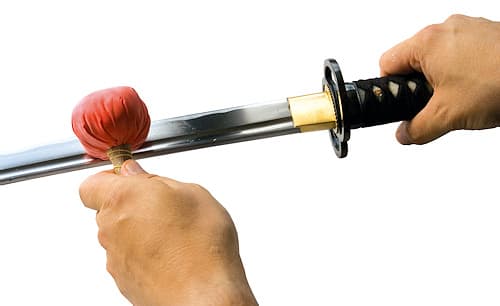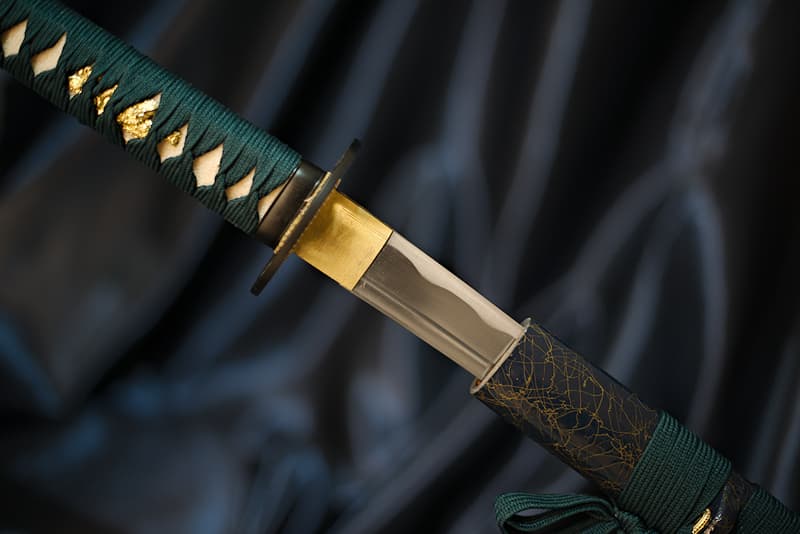Katana "Tsuru" (鶴 Japanese crane), Kobuse forge, selective tempering
Sharp katana, Kobuse forge (steels 1045 / 1095), genuine hardening line (hamon 刃文), hand sharpening, with black scabbard (saya 鞘), koiguchi (鯉口), Kurigata (栗形) and Kojiri (鐺) in natural horn, delivered in a composite wood case containing a maintenance kit, lacquered stand and fabric protective cover
Order no. 0572 - Ships within 48 working hours
867 € -25% = €650 until December 14th
Payment in 3 free instalments via Scalapay
or € today
Example for € :
3 monthly payments of € (0% APR)
A work of art and a formidable weapon, I am all of these things. My blade is forged from two steels, the first "softer" at the core, the second "extra-hard" on the surface. Combined with selective tempering, whose misty pattern decorates the edge of my blade, this allows me to claim exceptional characteristics. Supple yet highly resistant, I'm destined for the exceptional. Sober, my black frame features two mythical animals, Japanese cranes. Cut from my tsuba (鍔 guard), they symbolize longevity, good fortune and fidelity. Indeed, the Japanese crane chooses a partner for life. It is also a symbol of spiritual progress, enabling everyone to move to a higher level of spirituality.







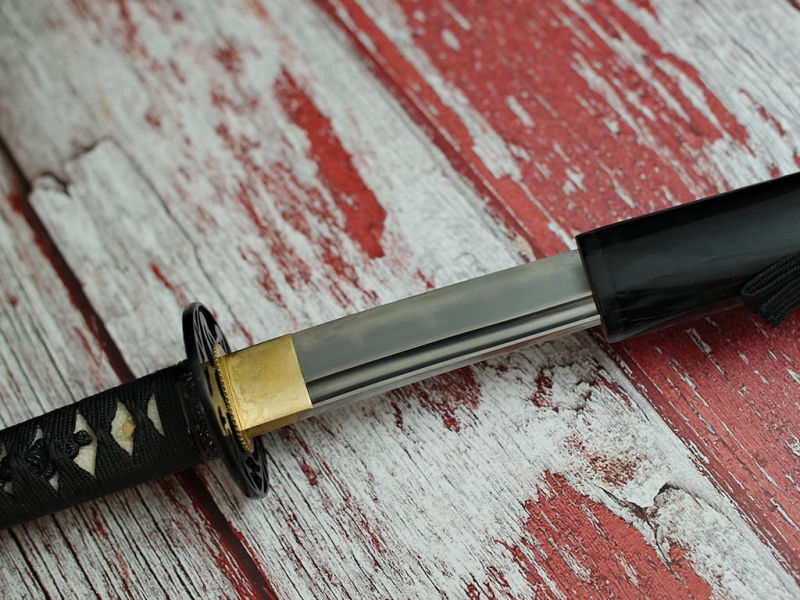


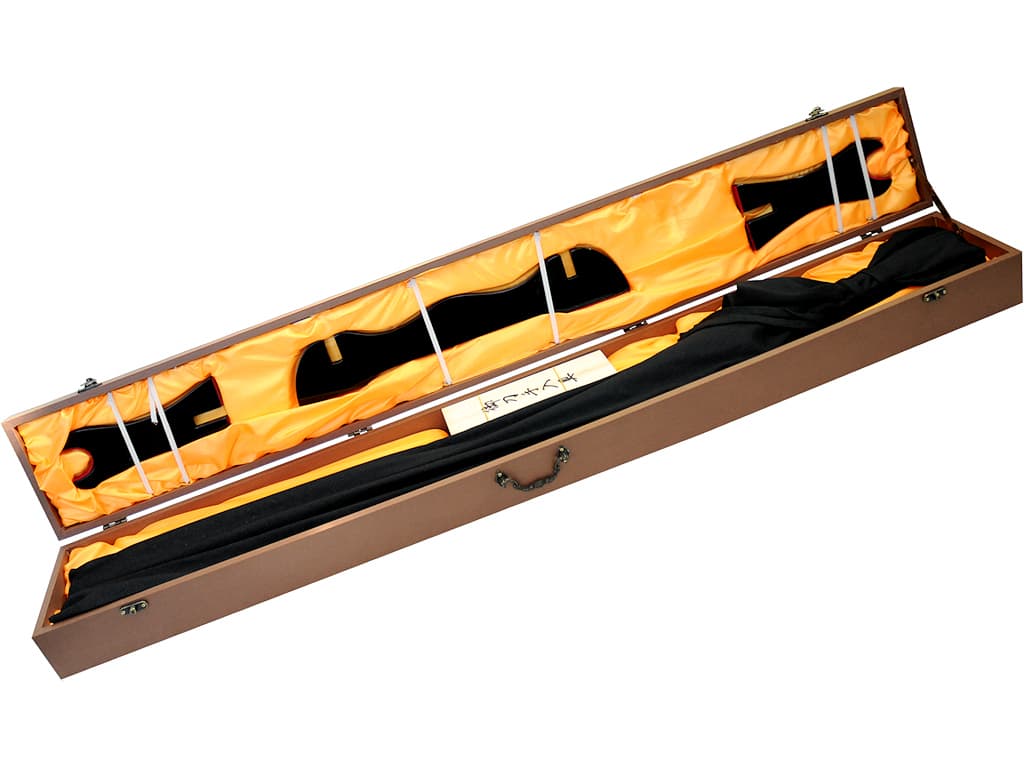
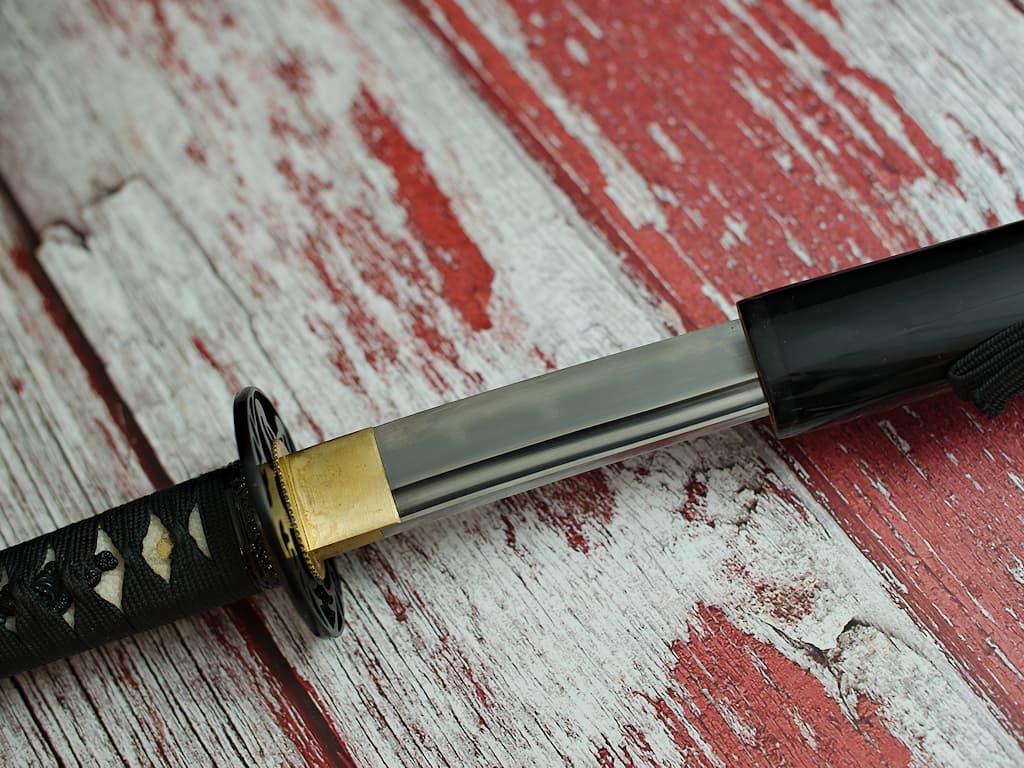


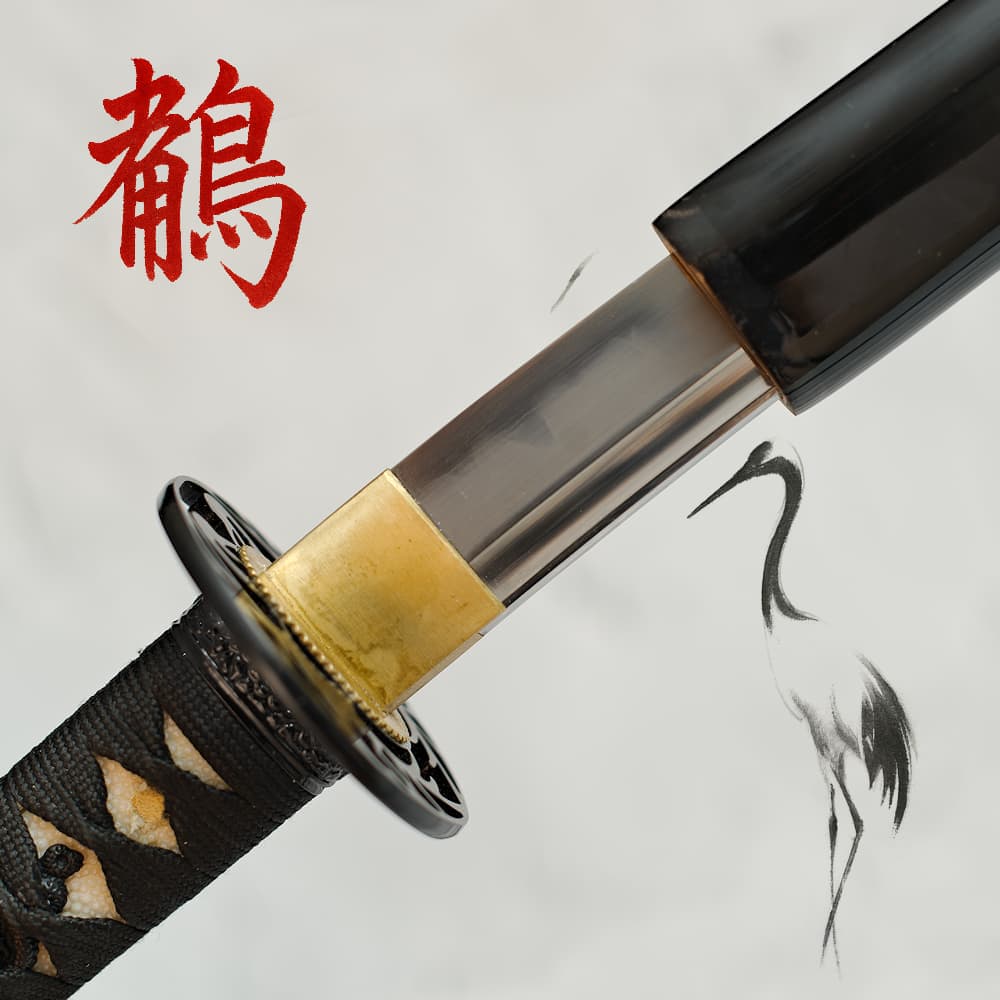


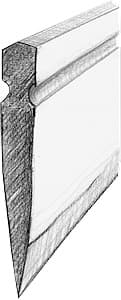 . Mune (棟) : Hikushi
. Mune (棟) : Hikushi